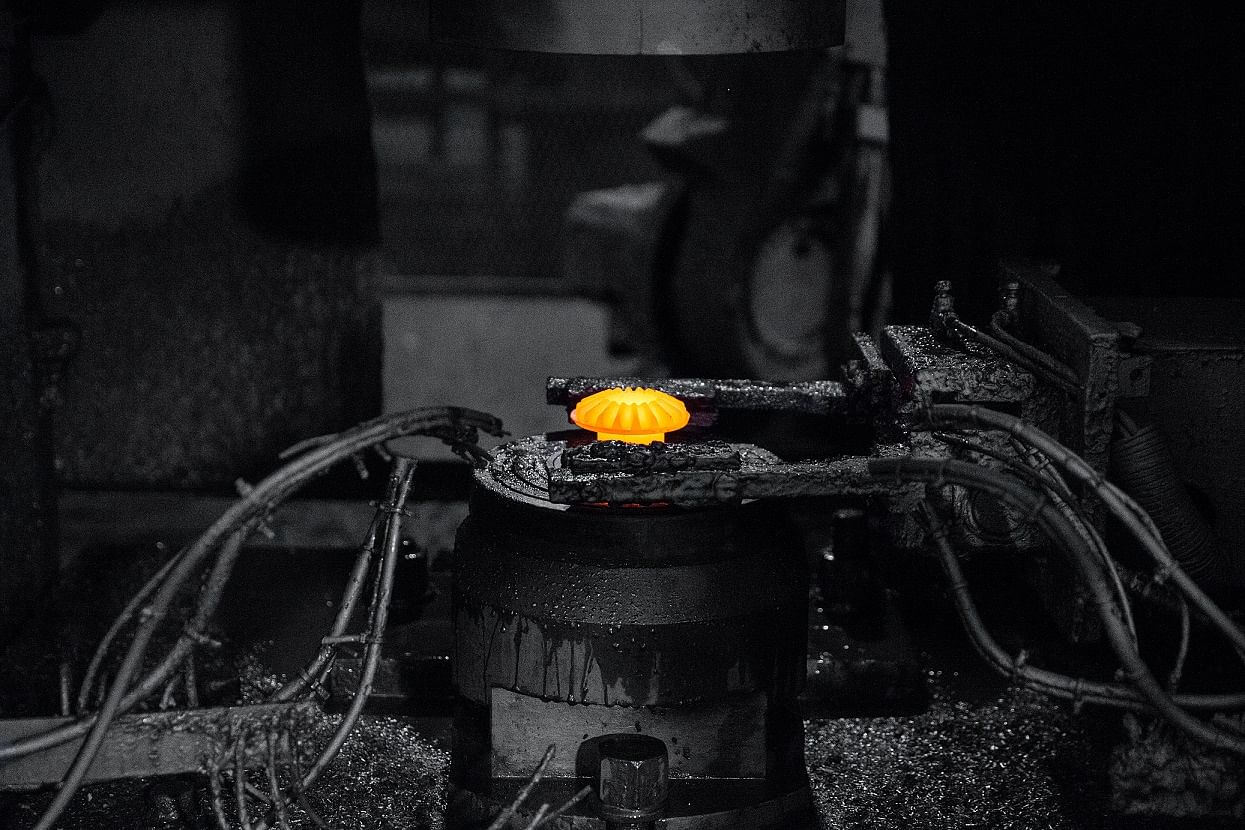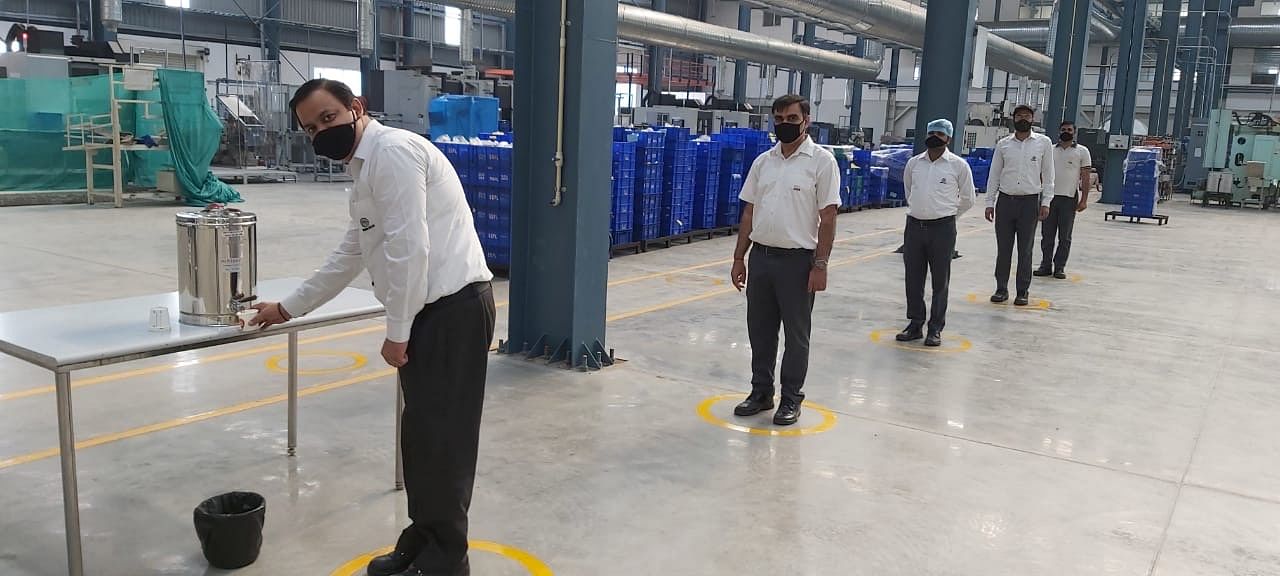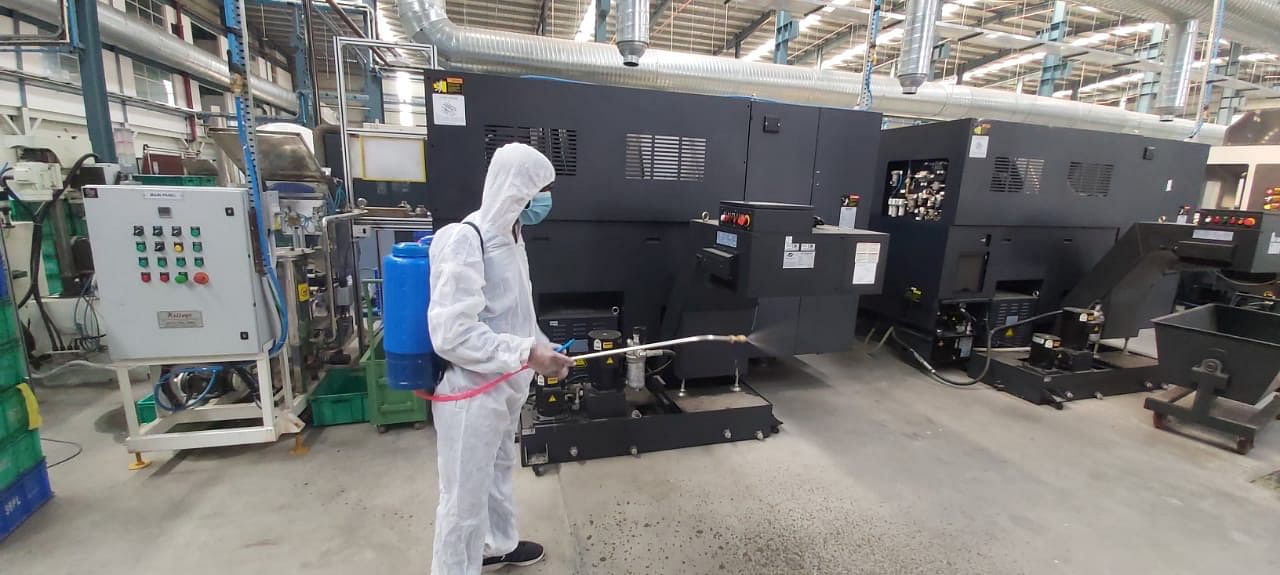Sona Comstar's Sunjay Kapur: 'We need to go back to work and do what we do best – manufacture components and vehicles.'
Sona Comstar's chairman on restarting manufacturing operations in India, impact of the lockdown, why pending export orders should be catered to immediately, and how India can transform into a global manufacturing hub.
In an expansive interview, Sunjay Kapur, Chairman, Sona Comstar, who is also Vice-President, ACMA and Chairman of CII Haryana, speaks to Mayank Dhingra on restarting manufacturing operations in India in 'safe' mode, the big challenge of migratory labour, impact of the lockdown, why pending export orders should be catered to immediately, and how the government can enable industry to transform India into a global manufacturing hub.
Sona Comstar has resumed operations after the lockdown. Which are the plants which have begun manufacturing?
We have opened in four locations in Haryana: three plants in Gurgaon and one in Manesar. It's been almost a week since they resumed operations on Monday (May 4). Including May 7 and 8, we opened up our starter motor plant in Chennai, while our Pune plant is still shut. Internationally, our China plant in Shanghai is operational; our Mexican and the US plants remain closed while our plant in Germany did not close at all and has been running throughout.
In India, our plants are now open mostly for exports because we have a lot of pending US-bound orders as farm equipment is an essential service in America, so it never shut down. Also, we have other customers that are still operating there. We are happy that we are back, up and running.
What are the initial hiccups being faced at the ports?
It has been a slow start from the perspective of shipping out. While the initial shipments have left our factories, there is some congestion at the ports due to lack of manpower and the backlog created by the lock-down. There are a lot of goods that need to get out of India and, similarly, come in. We are hoping that things will get streamlined in the next couple of weeks.
How much production capacity are you targeting initially? What will be the ramp-up plan?
We have just restarted operations and are making 2,000 differentials a week. It took us a couple of days to fire up the presses and restart the heat-treatment equipment. Since we were allowed to have frequent maintenance checks going on, it didn't take us that long to restart.
We will hit almost 50 percent of our forging capacity and 100 percent of assembly capacity over the next couple of weeks. We forge gears and then assemble differentials. The differentials are primarily meant for exports.
From the domestic supplies perspective, once forging takes off, only then we will start with the production meant for the domestic market.

Sona Comstar expects to hit 50 percent of its forging capacity and 100 percent of assembly capacity over the next couple of weeks.
Is a comprehensive release of the lock-down across India the only and best solution to revive the industry?
For OEMs to function, what is required is the entire supply chain to come back and how quickly it can do so. As you know, the scenario in Maharashtra is still unknown because of the situation in the state which might see another extension of the lock-down, whereas other parts of the country have opened up whether they fall under red, green or orange zones.
Also, there is the issue regarding migratory labour, some of which has gone away and some come back. There are restrictions on personal travel between districts. It will take us a couple of weeks to understand the situation on the ground. The situation is very dynamic and new for all of us.

Are you facing challenges of labour shortage at your plants, currently?
Currently, we are not operating with full labour because of the restrictions in place. We also have a fair bit of automation in our plants, so we may not require so many people.
However, we do have a lot of locals living in villages around the plants where we operate. While they have been able to return to work, the migrant labourers have gone back and we don't know when they will return. But we are hoping that once everything takes off, the economy kick-starts, the people's mindset changes and they are not fearful of the virus anymore, we will see the return of the migrants. As of now, we have enough people in the North to run our plants.
How do the challenges differ from state to state at this point?
Compared to Haryana, which is an orange zone, there are more challenges in Chennai as of now because the regulations are stricter. People who are older than 50 years of age are not allowed to step out, so is the case with someone living with the elderly in the age group above 65 years or having kids below the age of 10. So, pretty much the entire working population demographic has some restrictions or the other.
Having said that, we have got a sufficient number of people at this point in time and also have some stock of raw material in the inventory before the lock-down. So, as time goes by, we will increase the number of people.
The big challenge is really the migratory labour and given that the supply chain in automotive is very complex and inter-related, we need everyone to be up and running before we could put even one vehicle out on the roads.
How much of your workforce comprises migratory labourers?
About 40 percent of the labour at our plants comprises migrant workers. But, we are anyway operating at a 50 percent strength due to the restrictions in place. All of the Gurgaon district falls under the orange zone which restricts workforce to 50 percent at the shopfloor as of date.
Have you made provisions to house the workers inside the plant itself?
While we have made provisions, we do not need to house the workers who come from nearby villages. We had started making provisions even before the demarcations about different zones came in. So, we wanted to be prepared with all of these precautionary measures in place because we do export business and didn't want to lose any more days that we've already lost.
What are the new safety guidelines that you've needed to follow to resume operations?
Fortunately, there are various guidelines that are out there. We have worked together with the government of Haryana to make sure that we are exceeding their expectations. We have built our own SOPs in conjunction with ACMA and CII that include aspects on thermal testing, sanitisation and maintaining social distancing, to having a two-hour gap between shifts so that workers don't come in contact with one another.
Our customers have also given us very strict guidelines because safety is of utmost importance, and the automotive industry has always been driven by safety concerns and standards.
Having said that, yes, we will face some challenges when it comes to social distancing and therefore, we need to find the best solutions to those problems. For instance, some plants would not be able to maintain a six-feet distance between two people, but only three feet. So, can we employ the usage of face shields in those cases? These problems are being discussed at the moment and we would need to take the best practices from other countries as well.
Is work-from-home going to be the new normal?
Our main aim is to get as many production people as possible on the shopfloor, and the administrative staff is very skeletal at the moment. In my opinion work-from-home works really well with the technology that we have in place today. It's a good option, especially till the time we find a definite solution to the coronavirus.
What has been the impact on business over the last 40 days of lock-down?
We have had zero revenue and most of the automotive industry has been in the same boat. It's been very unusual and nobody had ever planned for such a situation. Still, we had to pay wages and salaries. Therefore, we had to have strong cash flows.
I think cash flow, capital, raw material and labour are the most important parameters that every company must look at. We have been looking at our cash flows every single day. Fortunately, we have built a robust business and been in a good position by being close to debt-free and that is what has allowed us to operate in this environment.
I think most of the automotive industry has built stronger and more robust businesses since the 2008 crisis. It's undoubtedly been a very difficult time. I don't think another few months of this and companies will be the same anymore. I am glad that we have restarted. I am a big believer that we need to go back to work.
Have you come across a distress situation showing up at any of your suppliers?
So far not and we have been in touch with them all throughout the course of the lock-down. But, this cannot continue for an indefinite period of time, you will eventually run out of cash. Smaller companies will feel the pinch; those which have made recent capital investments and those are high on debt will definitely be feeling the pinch right now.
It's not an easy situation to be in but fortunately, we have been able to manage our cash flows well. Our customers have been very supportive. OEMs have paid on time, which, in turn, has allowed us to pay our suppliers.
If at all, how much pay cuts are you strategising at different levels to sustain the business?
We have taken all the right measures for cost-cutting. The top management has taken a voluntary salary cut and we haven't touched anyone at the blue-collar level. Even at the white collar, it's only just at the top, right from me to the CEO, so that we can help the company as much as we can.
What would be your outlook for the company's business for FY2021?
I think our India business will probably be about 20 percent lower compared to last year in terms of volumes. Similarly, Europe too will see volumes go down by 20-30 percent. The US for us remains pretty stable at this moment with no growth or de-growth.
So, on an overall basis, we won't see growth and we will probably be lower than last year in terms of sales, but our focus will be to maintain our profitability by invoking any measure that we can to remain profitable.
We have also brought our break-even costs down by looking at cost-cutting measures either by reducing remunerations at the white-collar level or cutting down upon travel costs.
Our industry is very cyclical and while we have never seen such a situation before, we are used to continually looking at improving efficiency in operations, processes, procurement and in other areas as well.
What is the current situation of your business in China?
Our China plant is running at full capacity. The market in China has revived and there's been a lot of incentives for buyers and demand creation has happened.
We definitely look forward to something similar in India. We hope the government will help in demand creation whether it be through GST reduction, vehicle scrappage policy or by delaying some of the other regulations that they had planned to implement.
I am sure the OEMs are in conversation with the government on that front. Demand creation is absolutely important as we have been through 15 months of very difficult times in the automotive industry. Now, when we were hopeful of a positive 2020, the pandemic struck.
We hope that there will be demand creation. China is back up to almost normal, which is a good sign.
Would you also seek a direct stimulus package from the government to the industry?
We have asked the government for a lot of things, both at the state and central level, be it from reduction of GST on components to waiver of fixed electricity charges during the lock-down. Also paying the wages through ESI or CSR.
Everything aside, I think the biggest help for the automotive industry would be if we could just go back to work. We need to go back to work and need to do what we do best – manufacture components and vehicles.
Do you expect operational normalcy in the short term?
I think we will see that in bits and pieces. But it is better to wait another week than arrive at a start-stop situation which could be even worse. Having said that, I think we should restart even now from the perspective of the export opportunity. If we lose business, we will lose it. There will be temporary and permanent losses. People are not going to wait around for us and that is a fear that we have in the industry right now.
Do you think India has a good opportunity and what needs to be done to embrace it?
India has a good opportunity because India has the technology, the manpower and the expertise in small cars. What we need to ensure are two things – one each from the government and industry's ends. While the industry needs to bring in technology, the government needs to make it easier for us to operate. That's all it takes. It is very easy to say this but for companies to relocate, we need to make it easy to Make in India. For instance, can we look at some sort of grants on R&D, and can we reduce the power and fuel costs which are among the highest in the world? So, we have the potential for us to turn India into a global manufacturing hub and this is going to be a collaborative effort.
How soon do we need to act to tap into the opportunity?
We have already lost a fine opportunity when the China-US trade war was on and we lost to countries like Vietnam, Indonesia and Thailand. Companies are now looking even at Mexico.
It's a once-in-a-lifetime opportunity and we need to act now. A lot of conversations are already happening between the government and industry and we need to make quick decisions. And, I know that the government is listening and they themselves are also interested in creating India as a manufacturing hub. We now only need to implement this in a very structured manner.
Is there a notion among companies to move out of China completely to reduce risk?
Not at the moment but we ourselves have locally sourced some of the parts that we used to import from China from a de-risking perspective. I don't know how OEMs are thinking about the same but I am sure that customers will want to do local sourcing more than they have done in the past. Japan's announcement of moving its supply chain out of China is one indication. Again, this cannot happen overnight as the automotive supply chain is hugely complex and involves a lot of safety standards.
Also read: Sona Comstar achieves 250 million bevel gears production milestone
RELATED ARTICLES
INTERVIEW: "EV Demand is Rebounding both in India and Around the Globe" - JLR's Rajan Amba
Jaguar Land Rover India MD Rajan Amba discusses the India–UK FTA, the company’s manufacturing plans, the upcoming Panapa...
TVS Celebrates 20 Years of Apache, Eyes Premium and Global Push
Marking two decades of its flagship performance brand, TVS Motor unveiled special anniversary editions on Saturday while...
Q&A: Mahindra's Nalinikanth Gollagunta on Upcoming Festive Season, 'Bold' Design Choices
Automotive Division CEO Nalinikanth Gollagunta says mid-teens growth is achievable with Roxx ramp-up, BEVs, and a resil...






 09 May 2020
09 May 2020
 23282 Views
23282 Views















 Prerna Lidhoo
Prerna Lidhoo


 Darshan Nakhwa
Darshan Nakhwa


